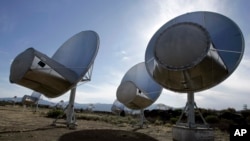Let's imagine having to point out to a close friend they hadn't actually won the lottery. You'd probably feel almost as bad as they would.
Well, that's where we are.
Big news
Earlier this week, the web was aflutter with news that radio astronomers in Russia had picked up 'suprisingly strong' radio signals coming from a star cluster about 94 light years away.
The signals were coming from the Hercules constellation, and based on the power of the signals and their frequency, the buzz was that this be a message from really, really advanced aliens. Excited stargazers began throwing around phrases like "this could be a type II civilization" and other such SETI (Search for Extraterrestrial Intelligence) arcana.
For clarity's sake, civilizations can be classified by something called the Kardashev scale. It was created by an astronomer named -- you guessed it -- Kardashev, as a way to gauge the technological advancement of any civilization.
Humans are almost a type I civilization. That means we can store and use energy from our sun, but still use fossil fuels. We'll be classified as a fully type I when we go completely to renewable power.
A type II civilization is one that can fully harness all the energy of their sun. That's way beyond us, and since we've never found anyone else out in space, the Kardashev scale isn't much more than a fun thought exercise. But it's important in times like these, because the strength of this mystery signal suggested an energy output on a stellar scale, far beyond us oil burners here on earth. That's really cool, and a bit scary.
Bad news
And then, the Russians stepped forward and very thoughtlessly ruined everyone's fun.
The news is a bit buried in a press release from the Russian Academy of Sciences. "...an interesting radio signal at a wavelength of 2.7 cm was detected in the direction of one of the objects (star system HD164595 in Hercules) in 2015," it stated. So far so good.
And then this: "Subsequent processing and analysis of the signal revealed its most probable terrestrial origin."
Darn!
Turns out that "terrestrial" likely means a Russian military satellite that no one knew or realized was out there.
The Russian News Agency TASS spoke with Alexander Ipatov, from the Russian Academy of Sciences. "We, indeed, discovered an unusual signal," he told TASS. "However, an additional check showed that it was emanating from a Soviet military satellite, which had not been entered into any of the catalogs of celestial bodies."
So much for winning the lottery.









